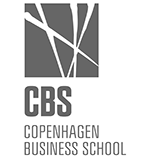Module

1
INTRODUCTION to Sustainability
download
teacher's notes
1.2 profit
> Grade: 7th to 9th
> Subjects
Entrepreneurship
Sustainability
a. how big businesses work
b. How all our stuff gets made
INTRODUCTION to Sustainability
1.2 profit
download
teacher's notes
> Grade: 7-9
> Subjects
- Entrepreneurship
- Sustainability
c. how a sustainable business might look like
A
how big businesses work
THEORY

In the same way that plants need water to grow, businesses survive on selling products and making more money – or profit. The need for companies to grow each year encourages them to find ways to make more profit, whether that’s by reducing the costs of workers, using improved technology to replace workers, or by making products more expensive. Because the world of business is so competitive, if they don’t grow and change, if they don’t make enough money, they risk being bought by a bigger company or even closing down. Unfortunately, as so many big companies operate unsustainably, their methods have become normal for other companies trying to keep up with them.
The bigger companies are supported with money from ‘shareholders’. These are people who invest in a percentage of the company. Imagine you are a shareholder. When you buy shares you are ‘lending’ a company money in the hope that the company will make a profit so you can sell your shares for more than you paid.
Most people who buy shares are only interested in buying shares that increase in value. If companies do not grow and make more profit, the value of their shares will fall and shareholders will soon start selling them. If the shares of the company decrease in value, the company will lose power and may be taken over by a bigger company with more capital. Because of this pressure to survive in the competitive world of business, companies are constantly looking for ways to create and sell more products. For example, by selling things in new countries or using marketing to encourage more customers to buy their products; and by doing it all as cheaply as possible!
Growth and cost-cutting often come at the cost of environmental sustainability. This power of companies to produce more and more goods seems to have grown out of control, driven by shareholders’ demand for profit and by competition amongst companies for both customers and new markets.
concept check
match the key terms from the text to the definition on the right
profit
invest
shares
market
capitalism
marketing
capital
consumers
An economic (and usually) political system in which a country's trade and industry are controlled mostly by private owners / shareholders for profit, rather than by the state.
A place where things are bought or sold.
Promoting and selling products and services, including research about what products consumers want and advertising those products.
A person who buys goods or service.
In business, to spend money on something in the hope of making a profit. This can be short-term profit or a longer-term goal, like a better image for your company.
A division of a company’s capital that entitles the buyer to a proportion of the company’s profit.
A financial gain, including the difference between the amount a company pays to produce something and the amount they earn from selling it.
Money available to a company for purposes such as investing in new technology, building new factories and shops, developing and advertising new products, paying high salaries to managers, etc.
how a sustainable business might look

THEORY
A sustainable business should make sure that the natural resources it uses to create products come from a sustainable source, i.e. a source that can be replaced and won’t run out. It should make sure that its methods of production do not result in pollution and other environmental damage.
A sustainable business should also consider the wellbeing of all the people who work for it, which includes paying them enough to lead enjoyable lives. A socially responsible company should pay taxes, especially as taxes pay for all the public services necessary for people to sustain a decent standard of living. These are services that companies benefit from greatly, such as systems of transport, systems of waste and disposal, the supply of energy and water, and even basic security. Companies’ priorities should be profit, but also the wellbeing of the community and the environment.
mini research task

TASK 1 - Find three examples of sustainable sources.
TASK 2 - Find the names of four famous companies that have been in the news for not paying taxes.
TASK 3 - Find out what ‘CSR’ stands for and what it means.
TASK 4 - Find out what ‘tax evasion’ means.
TASK 5 - Find out what the ‘triple bottom line’ means.
activity
Let's finish the class having fun!
Here you have a link to a quiz about sustainability and fashion.
You need to register and join the quiz on you phone, tablet or computer.
Enjoy!

How all our stuff gets made
VIDEO
the story of stuff
From its extraction through sale, use and disposal, all the stuff in our lives affects communities at home and abroad, yet most of this is hidden from view. The Story of Stuff is a 20-minute, fast-paced, fact-filled look at the underside of our production and consumption patterns. The Story of Stuff exposes the connections between a huge number of environmental and social issues, and calls us together to create a more sustainable and just world. It'll teach you something, it'll make you laugh, and it just may change the way you look at all the stuff in your life forever.
http://storyofstuff.org
comprehension questions
1. What are the ‘three Ps’ that a sustainable business should take care of?
2. What is a ‘sustainable source’?
3. What are some of the way that companies could be socially responsible?
4. In what ways do companies based in developed countries benefit from the tax people pay in those countries?






Now you've learned about Profit!
POWERED BY






